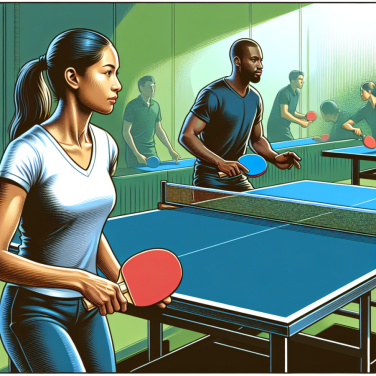Understanding the Longevity of Golf Balls: Dispelling Misconceptions
It's a common question among golf enthusiasts: can golf balls deteriorate with time? There is a significant lack of understanding when it comes to the longevity of golf balls, contributing to much hearsay and misconceptions. In reality, the truth about golf ball longevity isn't as cut and dry as one might imagine.
Firstly, golf balls are intricate pieces of engineering that balance a range of properties to give players the optimum performance. The materials used in their manufacture, the design and type of ball, and the conditions in which they are stored, all contribute to their overall lifespan.
Most of the time, the concept of a golf ball 'going bad' implies that its performance parameters have degraded to the point where it's no longer suited for play. This deterioration can occur in various ways such as a decline in distance performance, precision, or overall feel. However, it is important to note that decay in performance is not necessarily equated with time.
Talking about physical wear and tear, a golf ball can certainly wear down with regular use. Smacking it with a club repeatedly will inevitably lead to scuff marks, cuts, abrasion damage, etc. This visible damage undeniably impacts the ball's aerodynamics, thus adversely affecting its performance. However, a well-cared-for and infrequently used golf ball doesn't have this concern.
If golf balls are stored properly - kept indoors, away from extreme temperatures and direct sunlight, and not submerged underwater - they can last for years without degradation. It is the exposure to harsh elements that can cause the materials in the golf ball to break down over time.
A common myth is that keeping golf balls in the freezer will prolong their life. This is entirely a misconception. Just like excessive heat, excessive cold can also damage the golf ball's materials, impacting its performance. The same goes for the rumors about golf balls losing their bounce if they are stored in the car trunk or damp basement for too long. It's less about the storage duration and more about the storage conditions.
Given these aspects, there is no standard expiry date for a golf ball. Its lifespan is significantly more dependent on usage and storage conditions rather than time alone. Moreover, the technology used in the production of golf balls has significantly evolved over the years. Modern balls are made from robust materials designed to withstand harsh conditions better than older models.
Read also:
The Rising Golf Star Known as 'Beef': Who is He?"
Breaking Down the Truth: Do Golf Balls Deteriorate Over Time?
The debate around golf balls deteriorating over time has been ongoing for several years among the golfing community. Many golfers swear by the rule that older balls lose performance, while others dismiss it as a myth. In reality, the truth lies somewhere in between.
To comprehend whether golf balls deteriorate over time, it's essential to understand the makeup of a golf ball. A golf ball consists of a rubber core, various layers of interior design depending on the ball, and a durable plastic exterior. This composition leaves room for potential degradation over time depending on specific conditions.
Firstly, let's consider the environment in which the ball is stored. It is a known fact that severe variations in temperature can cause the materials used in a golf ball to expand and contract, thereby leading to potential deformations in the shape of the ball. If stored in extremely hot or freezing conditions for a prolonged period, the golf ball can indeed deteriorate and lose its initial performance characteristics.
However, it's also important to remember that golf balls are designed to withstand extreme conditions. Manufacturers design them to endure the vigorous impact of being hit numerous times and still retain their shape and performance. Therefore, under normal storage conditions, a golf ball should not deteriorate to an extent that impacts its performance significantly.
Another factor that contributes to the potential deterioration of golf balls is the exposure to water. If a golf ball is left in water for an extended period, it can infiltrate the outer cover and affect the interior materials, causing the ball to lose its elasticity. This, in turn, can result in decreased distance and potentially inconsistent flight.
However, do golf balls deteriorate just sitting untouched in your garage? The average shelf life of a golf ball is typically five years. That's assuming they're stored under ordinary room temperature conditions, away from any excessive heat source, cold, or water. After this period, the ball's performance may start to fall off, albeit only slightly.
Interestingly, UV exposure is another potential factor in the deterioration of golf balls. Prolonged exposure to sunlight can cause the colors of the ball to fade and could potentially degrade the materials over time, although the effect of UV light on the performance of golf balls is minimal.
In summary, golf balls can indeed deteriorate over time, but the extent to which they do largely depends on the conditions they are stored in.




